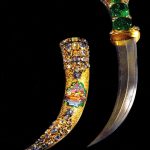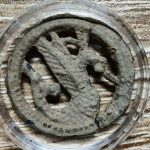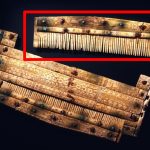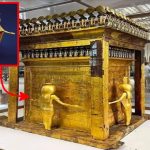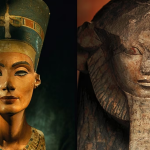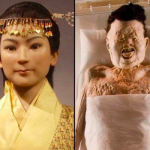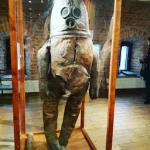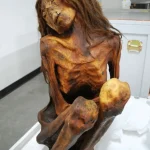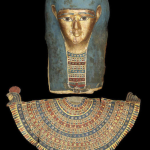The remarkably well-preserved and ornately decorated mummy of Lady Isaious, showcasing the lavish rituals and beliefs surrounding the ancient Egyptian journey to the afterlife.
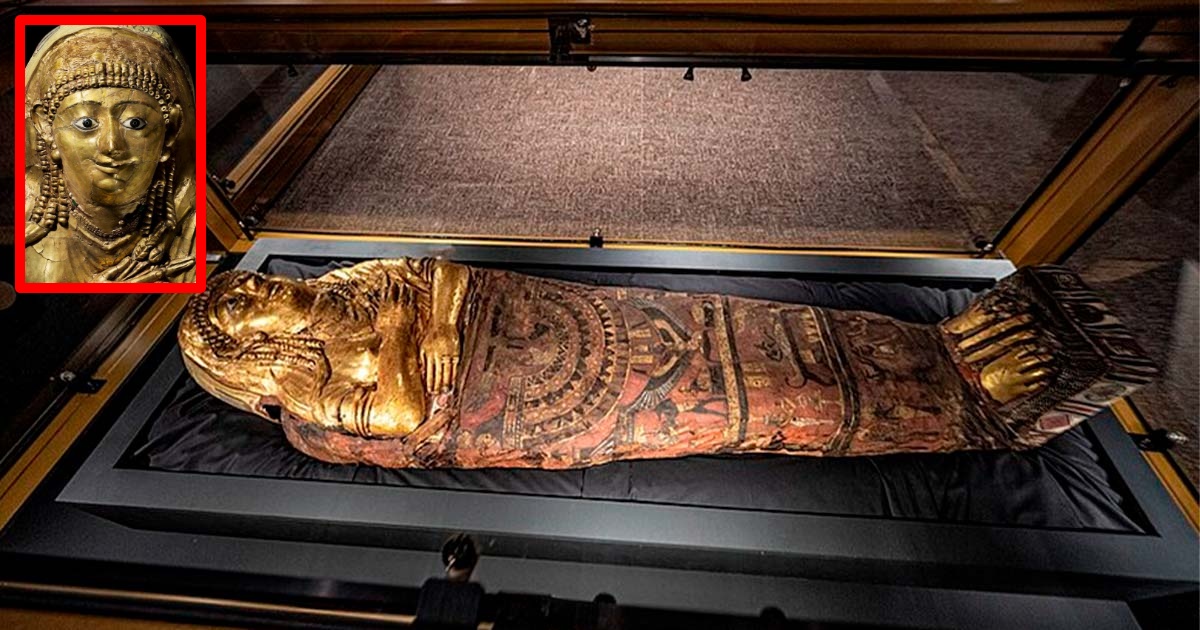
Sir William Matthew Flinders Petrie was one of the foremost Egyptologists and archaeologists of our time. Renowned for his discoveries in Egypt, as well as for pioneering systems of preserving artifacts, Sir Flinders Petrie helped us understand Ancient Egypt in ways we couldn’t even imagine. Thanks to his work in the early 20th century, many important relics from this ancient civilization have seen the light of day. And amongst all his discoveries, one really stands apart for its uniqueness. It is a special gilded mummy, belonging to a Lady Isaious, whose extravagant and rich appearance tells us a lot about a transitional period in the late stages of ancient Egyptian history.
A Golden Mummy to Shine in the Afterlife
In 1911, Sir Flinders Petrie was conducting his third season of archaeological excavations at Hawara in Egypt. This important site lay south of the famous ancient city Crocodilopolis, and was the place where Pharaoh Amenemhat III built one of his lavish pyramids. Besides this, many other interesting burials and finds were discovered on the site.
Amongst these finds were a great number of mummies that belonged to the Graeco-Roman period of Ancient Egyptian culture, when the classic art and customs of this civilization were greatly influenced by the classical art of the Mediterranean.
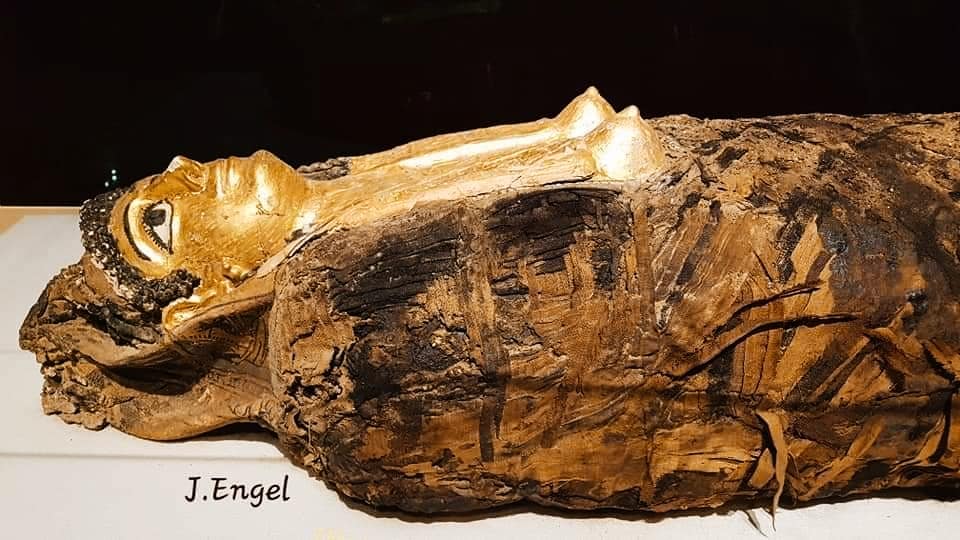
The number of mummies discovered at Hawara was astounding. Flinders Petrie reported that they were “heaved over by the dozen every day”. By all accounts, many of them belonged to ordinary citizens of the time, lacking any names or lavish details. Some possessed unique painted portraits, later to be called “Faiyum mummy portraits”. But a few obviously belonged to prominent individuals, nobles and wealthy persons, whose mummies had to be specially adorned.
And the one that really stood out was completely gilded, elaborately decorated and very fascinating. It quickly caught the attention of Flinders Petrie and his colleagues. At once, they attempted to uncover the identity of the person laid to rest. The mummy was labeled in Greek lettering: at first, Petrie translated the words as “Demetria, wife of Icaious”, but it was later revealed that the more likely translation was “Isaious, daughter of Demetrios”. So, who was this noble and wealthy lady?
The Hidden Stories Behind Their Eyes: Unearthing the Secrets of Fayum Mummy Portraits
Mummies have had a bad wrap – it is time for a reassessment
The Rich Burial of an Egyptian Lady
The style of this golden mummy was unique. It carefully blends traditional Ancient Egyptian practices with distinct Graeco-Roman influences. The face shows idealistic features customary for the Ptolemaic dynasty (305 to 30 BC), while the decorations are distinctly Egyptian. Flinders Petrie dated the mummy to the 1st century AD, in the very last stages of the Ptolemaic period. That fact itself tells us that ancient traditions of Egypt were very strong.
The mummy’s upper part – the torso and the head – are completely gilded, featuring a very detailed mask. A special wreath is in the lady’s hands, and a classic Egyptian coiffure is on her head. Corkscrew curls show a customary hairstyle, while a lavish bejeweled necklace hints at her wealth. The snake bracelets she wears are a classic Egyptian element – the pharaonic protector, the cobra, guards the deceased in the afterlife. Shiny jewels, the glint of gold, and the emphasized features – the mummy displayed many unique features that only belong to the Roman cultural sphere. As such, it steps away from the classic Ancient Egyptian mummies which were often more somber and dark. Flinders Petrie himself was not impressed with all the pompous extravagance. So much so that he described the mummy of Lady Isaious as “quite too splendaciously got up”.

The Lavish Journey into the Afterlife
The lower part of this rich mummy is covered in a special red shroud. It is covered in pigment and the images from the Ancient Egyptian afterlife. Anubis and Thoth in their traditional roles, the sky goddess Nut, and all the other creatures of life beyond: they are presented guiding the deceased towards a new existence beyond this world. On the shroud’s sides are hieroglyphic inscriptions dealing with the soul’s journey to the afterlife, and they were all very well preserved, even after many, many centuries.
The feet of Lady Isaious were bound in an elaborate cartonnage footcase, as was customary with all Egyptian mummies. The underside of the footcase shows a superbly preserved and detailed painting of two naked and bound enemies. Their position is symbolic – the lady would forever trample on them and display her power. Inscriptions such as “your enemies under your sandals”, clearly tell us what the meaning here is.
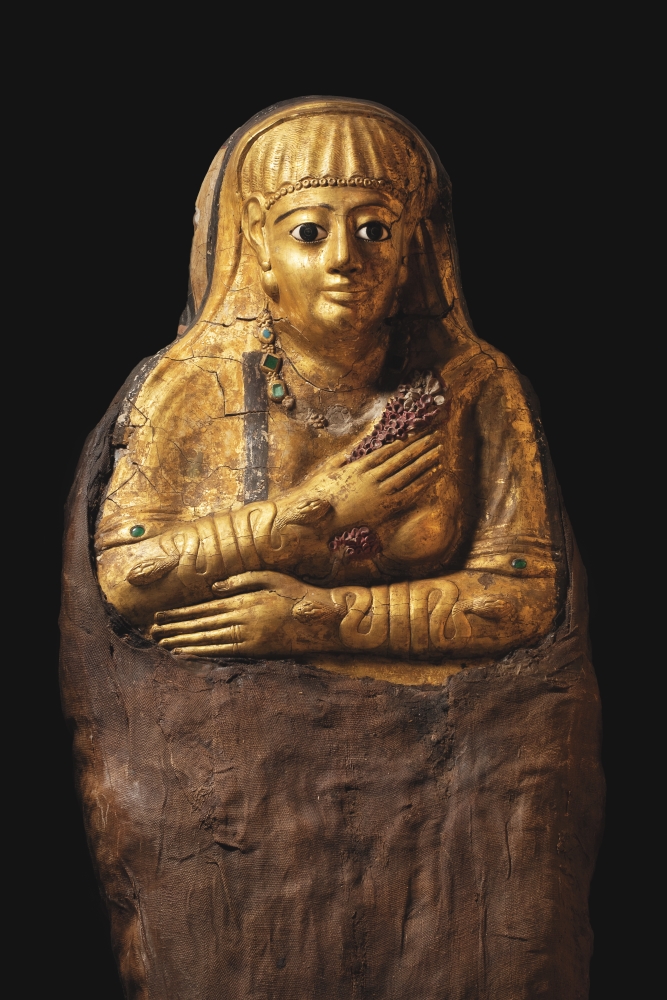
Alas, we do not know who exactly Lady Isaious was. Her identity remains a mystery, and she could have simply been a part of the local aristocracy, coming from a family that had enough wealth to provide her with such a burial. Still, from her mummy we can see that her journey into the afterlife was above all – extravagant and in first-class style.
Mummy Found Covered in Gold May be Oldest Ever Found in Egypt!
Scans Reveal Magic Amulets Inside Egyptian Golden Boy Mummy
A Glimpse into Graeco-Roman Egypt
After its discovery in 1911, the mummy was eventually shipped to the Manchester Museum, in England. There it received a thorough and painstaking reparation – after all, being many centuries old, it received a bit of damage. Still, it was preserved well enough to allow thorough research as well.
All in all, the golden mummy of Lady Isaious – together with all the unique Faiyum and Hawara mummies – is the ideal window into a period of late Ancient Egyptian history and the mix of cultures that developed at that time. A major step away from the classic mummies of old Ancient Egypt, this shiny and “kitsch” mummy really takes the journey into the afterlife to a whole new level.
